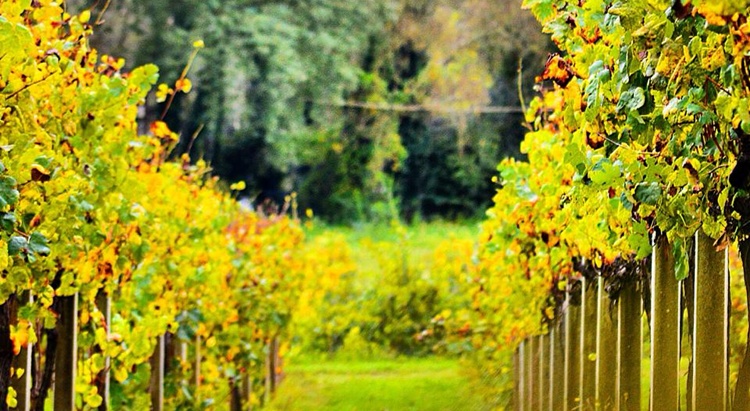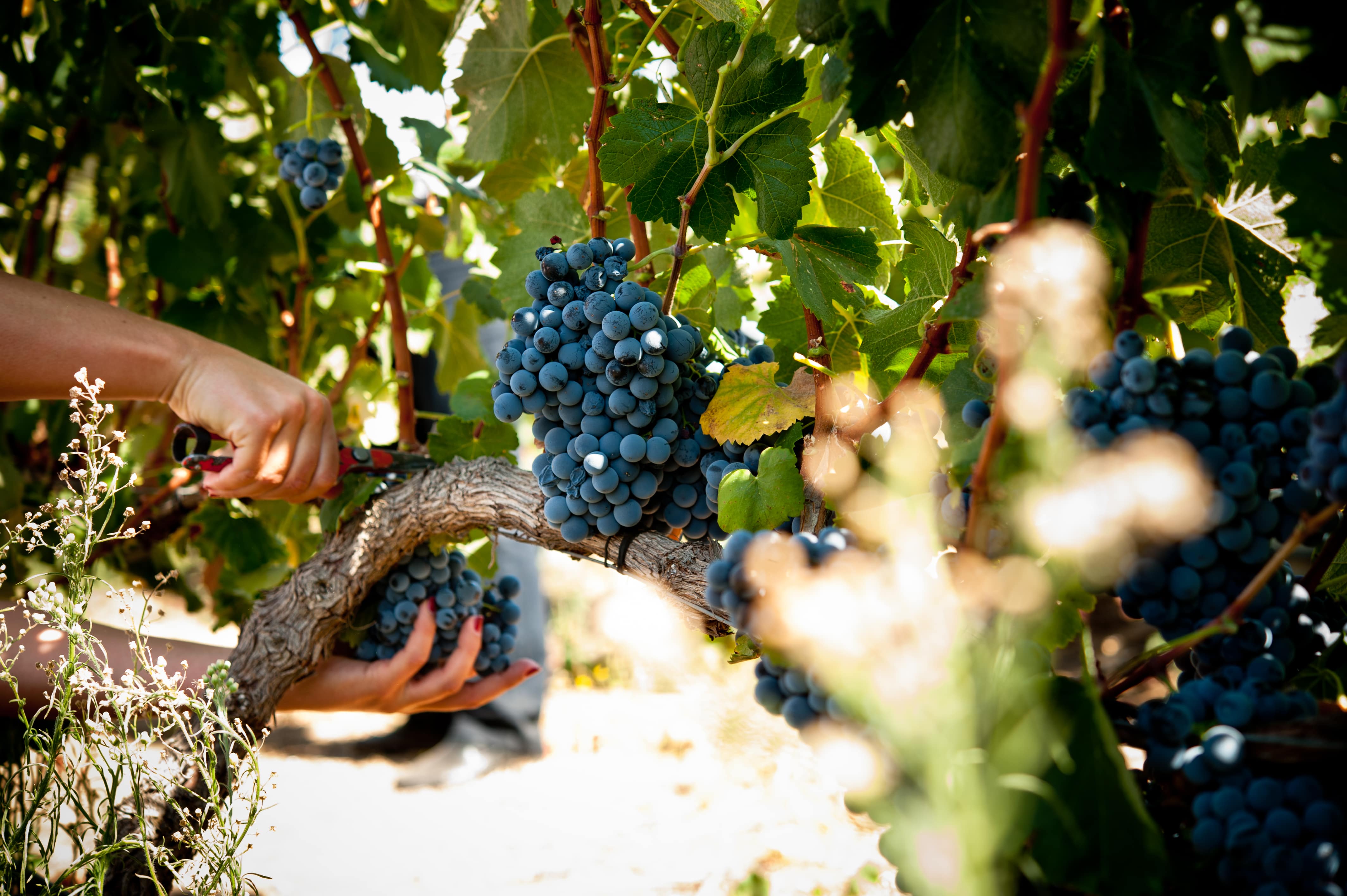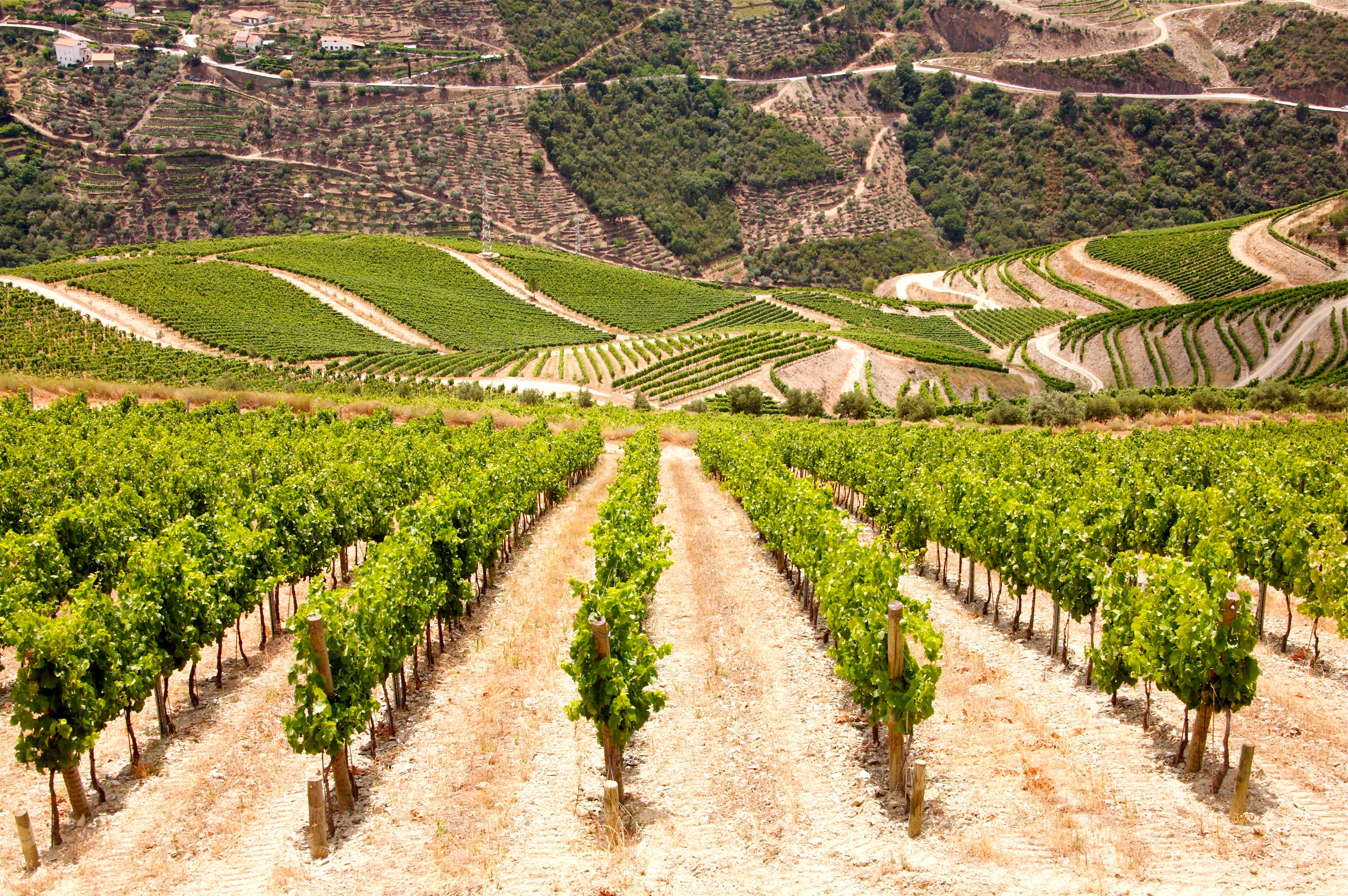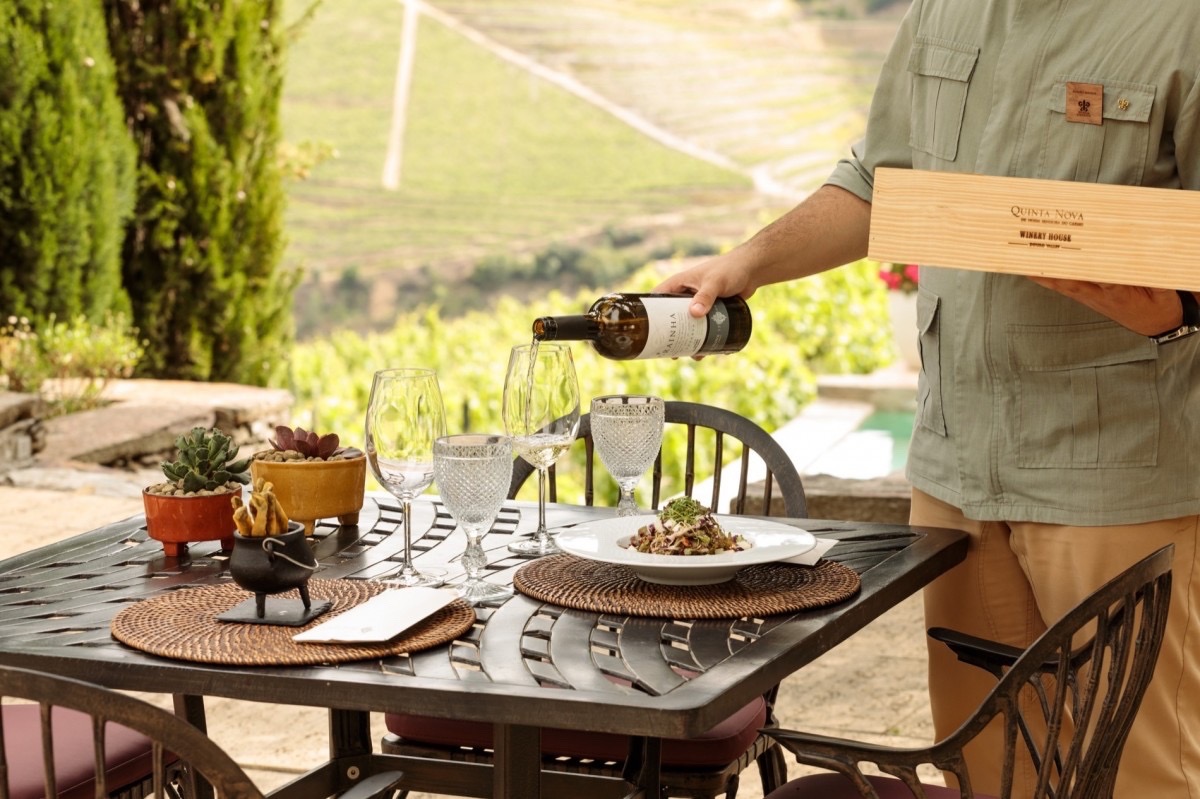The wine culture in Portugal is very strong and pretty much connected with its long history, and deeply related to the story of the land and the people involved in wine-making activities.
Nowadays, people are even more interested to find out the origin of food and wine of choice. In Portugal, with more than 14 wine regions and 31 Docs (Denominação de Origem Controlada), the Portuguese wine regions are an amazing wine touristic experience. Moreover, wine has a very complex tasting nature, waging in between its sweetness, passing through the tannin until its aroma. But, in Portugal the wines are unique, mixing the secular traditions of a wine-making activity with the unique grapes variety, this makes the country a very important destination for those who also want to explore unique and memorable wine experiences.
Discover the best Portuguese wine regions.
Vinho Verde

This wine region, considered the largest in Portugal, has 34000 hectares starting below the Portuguese-Spanish border, stretching all the way to the Atlantic Ocean and to the city of Porto. It is fairly wet and rainy and receives the full brunt of the maritime influence. With a myriad of wine types, natural issues, and microclimates, the wine produced there is typically recognized for being aromatic, refreshing, clean, and very light. Besides, this Portuguese wine region is also full of curiosities.
The name Vinho Verde (Green Wine), for example, is usually misunderstood with color character, but it doesn´t have to do with that. It suggests that it is meant to be consumed in the first few years of its life. In fact, the category does not discriminate by color, comprises red, and rosé wines, too, though the whites have come to dominate production. Another curiosity is that since 1999 the region produces sparkling wines of great quality and shows itself as one of the most promising places for the production of top sparkling wines.
Douro e Porto
The Douro Wine Region was demarcated in 1756, becoming the oldest wine region in the world. It's where most of the top wines are produced and that was one of the reasons that it was elected by UNESCO a “World Heritage” since 2001. Is located about 90 km (56 miles) distance from the city of Porto. It’s in there that the Port Wine is born, the main ambassador of the Portuguese wines, having achieved worldwide notoriety. Its beauty comes from the monumentality of its steep slopes, bathed by the river Douro. The long mountain range protects the valley, on the west side, from the cold and humid winds that sweep from the Atlantic Ocean. These protection origins colder winters and warmer and drier summers. Moreover, the climate characteristics produce unique full-bodied, tannic red wines and on the other hand, crisp, mineral, fruity light-bodied white wines.
The grape varieties cultivated in the region are famous for their secular history. Some varieties come from the Middle Ages. The best ones for the production of Port Wine are: Touriga Nacional, Touriga Franca, Tinta Barroca, Aragonez (in the region named as Tinta Roriz) and Tinto Cão, there are also other varieties extremely important in the region, such as Tinta Amarela (Trincadeira) and Souzão. The production of white wines is essentially sustained by the plantation of varieties like Malvasia Fina, Gouveio, Rabigato e Viosinho. For the production of Moscatel, the planted variety is Moscatel Galego. If you want to discover these regions, just visit an estate, and a cellar, particularly the terraces cultivated on the slopes along the river, is highly recommended.
Bairrada Region
The region of Bairrada has got over 10000 hectares of vineyards being well known for its high-quality wines, like Baga, in the red wines, and Bical, in the white wines. This land was also a land of fights between Christians and Arabs, early in the formation of Portugal when the capital of the kingdom was Coimbra and the path was towards the south. Surviving all this hostile past, it began to export its wine in a very early period. This Portuguese wine region produces wines full of color and rich in acids, but well balanced and with great longevity. The DOC of Bairrada has been allowed to plant international varieties, such as Cabernet Sauvignon, Syrah, Merlot, and Pinot Noir, which share the lands with other national varieties, such as Touriga Nacional or Tinta Roriz. The white variety Fernão Pires (of the region named Maria Gomes) is the most planted. They're also the varieties Arinto, Rabo de Ovelha, Cercial e Chardonnay. The whites of this region are delicate and aromatic. Besides wine recognition, this region is also known for its incredible gastronomy.
The sparkling wines of the region are used as appetizers or in the local cuisine. Apart from that, the Bairrada region also offers several other attractions. The Bussaco Palace Hotel or Aliança Underground Museum, where Wine and Art come together. Taste the unique flavor of the Bairrada regional wines and learn more about Portuguese heritage by visiting the eight different collections of the museum: archeology, ethnography, mineralogy, paleontology, tiles, ceramics, and tin; covering the history of millions of years.
Lisbon
Lisbon is the second-largest producer of wine and is composed of nine designations of origin, grouped into three geographical sets due to its characteristics Bucelas, Carcavelos, and Colares (south), Alenquer, Arruda, Lourinhã, Óbidos and Torres Vedras (center), and Encostas d'Aire (north). It justifies the Denominação de Origem Controlada (DOC). This Portuguese wine region has very fertile clay soil and a mild micro-climate set in distinctive geographies also has a lot of inexpensive quaffing wine, known as vinho de mesa.
If you're looking to explore the wine country and venture out of the city, there is plenty to see and do just a short drive away. You'll find some of the most traditional yet cutting-edge wine-producing estates in the country. Beyond the city limits, the scenic country roads around Lisbon will grant you an unforgettable wine road trip.
Península de Setúbal
The peninsula of Setúbal is part of the Designations of Origin, Palmela and Setúbal, and the designation of the regional wines "Peninsula de Setúbal”. Along with the peninsula of Tróia, acquired great recognition and importance in the last decades of the twentieth century. It is estimated that the cultivation of vineyards has entered the valley of the River Sado by the Tartessians, for about 2000 BC. It then became a strategic resource and of great quality in the region since Roman times. This region has always played an important role in the history of Portuguese wine, especially for the dessert wine Moscatel and Moscatel Roxo. Most of the wines of the region use the variety of Castelão (known in the region of the Peninsula of Setubal by Periquita) in its composition. The wines of Castelão are structured, with fruity flavors, suggesting cherry, currant, acorn, chestnut, candied plum, blackberry, and raspberry aromas, which harmonize well with the stage in oak barrels. As a general rule, they have excellent aging potential.
Setúbal is just the starting point for you to visit Palmela and explore its magnificent castle–the citadel and taste the Muscatel Wines.
Alentejo
Alentejo region was demarcated in 1988 and is divided into eight sub-regions: Reguengos, Borba, Redondo, Vidigueira, Évora, Granja-Amareleja, Portalegre and Moura. It covers about a third of Portugal and has confidently taken its place as an area of outstanding wine production. Here, in Alentejo, you will find the untold story of many ancient civilizations through the agriculture legacy, the most comprehensive is the vineyards. This nowadays renowned Portugues wine region was in fact a wine region by definition for centuries.
When talking about wine, the most important white grape varieties in the region are the Roupeiro, Antão Vaz, and Arinto. Regarding the red varieties, we should refer to the importance of Trincadeira, Aragonez, Castelão, and Alicante Bouschet (French variety). Therefore, the area is represented by the full-bodied reds, rich in tannins, and with aromas of wild and red berries. The white wines are mild, slightly acid, and with aromas of tropical fruits. In short, the Alentejo wines offer tremendous pleasure, be they white, rosé, or red wine.
Why book now your 2021 or 2022 tour? Because by booking all your tours with us you will have flexibility in the future, plus an acquired "Clean and Safe" seal. Through these unique times, we are available to plan, reschedule, and move your trip around your needs, as always. If your new dates may no longer work with your initial travel plan, a dedicated consultant will be available to tailor and reschedule your time in Portugal according to your needs and preferences, and to assure you that you will have the best and most memorable experiences.





.jpg?width=922&name=8(8).jpg)



.jpg)



